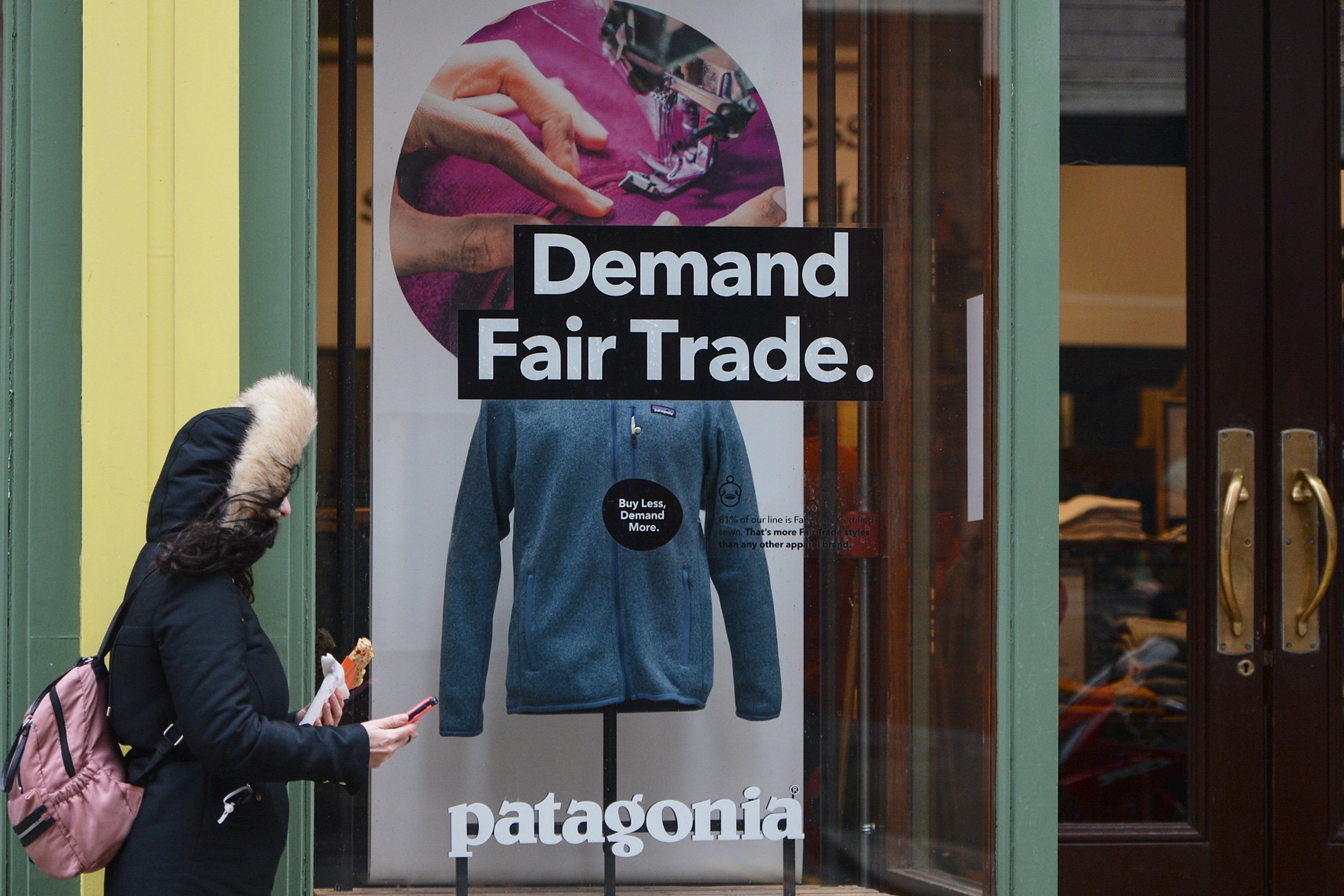
Welcome to the wild world of eco-friendly branding, where being green is not just a color, it’s a lifestyle. In this article, we’ll explore the ins and outs of sustainable strategies and logos that not only make Mother Earth smile, but also make your customers do a double-take. So grab your reusable water bottle and let’s dive into the world of environmentally-conscious marketing with a side of humor and a sprinkle of sass. Let’s go green in style!
Defining Eco-Friendly Branding
Ever wonder what it means to have an eco-friendly branding? Well, wonder no more! Let’s break it down in simple terms that even Mother Nature would approve of.
When it comes to , the key is to prioritize sustainable practices. This means using materials and resources that won’t harm the environment, like recycled paper for business cards and soy-based inks for logos. It’s all about reducing your carbon footprint while still looking fabulous.
Another important aspect of eco-friendly branding is highlighting your green initiatives. Make sure to showcase your commitment to the environment on your website and social media. Customers love a company that cares about more than just profits – show them you’re in it for the long haul and they’ll be flocking to support you.
Remember, being eco-friendly doesn’t mean sacrificing style. You can still have a killer logo, killer website, and killer marketing materials – all while being kind to the planet. So go ahead, embrace the green side of branding and watch your business bloom!
Importance of Sustainable Strategies
Sustainable strategies are like the superheroes of the business world – they swoop in to save the day and protect the environment from the evil clutches of pollution and waste. Without these strategies, our planet would be in serious trouble, like a damsel in distress waiting for her hero to come to the rescue.
By implementing sustainable strategies, businesses can reduce their carbon footprint and help combat climate change. This is like putting on a cape and flying into action, ready to take on the villains of greenhouse gases and deforestation. It’s a noble cause that benefits not only the earth, but also future generations who will thank us for our heroic efforts.
With sustainable strategies in place, businesses can also save money in the long run. By reducing waste and energy consumption, they can keep more of their hard-earned cash in their pockets. It’s like finding a pot of gold at the end of the rainbow, except instead of leprechauns, it’s just good ol’ sustainable practices leading the way.
In conclusion, sustainable strategies are the unsung heroes of the business world. They fight against environmental villains, save us money, and ensure a brighter future for all. So let’s raise our glasses (preferably made from recycled materials) to these noble strategies and continue to champion their cause.

Elements of Eco-Friendly Logos
Eco-friendly logos are the latest trend in the design world – everyone is jumping on the sustainable bandwagon! But what exactly makes a logo eco-friendly? Let’s break it down:
- **Sustainable color palette:** Choose colors that are easy on the environment – think earth tones like forest green, ocean blue, and sunshine yellow. Avoid toxic neon colors that scream “I’m harmful!”
- **Use of natural elements:** Incorporate elements like leaves, trees, or animals into your logo design. Not only will it make your logo look eco-friendly, but it will also give you major nature vibes.
- **Minimalist design:** Less is more when it comes to eco-friendly logos. Keep it simple and clean to reduce visual pollution - Mother Earth will thank you!
Remember, an eco-friendly logo isn’t just about slapping a leaf on your design and calling it a day. It’s about making conscious design choices that prioritize sustainability and respect for the environment. So go forth, fellow logo designers, and create logos that make the world a greener place, one pixel at a time!

Case Studies of Successful Eco-Friendly Branding
At Eco-Friendly Emporium, we believe that going green doesn’t mean sacrificing style or success. In fact, our case studies prove that being eco-friendly can actually boost your brand’s reputation and bottom line. Take a look at some of our favorite success stories:
1. Bamboo Bliss: Bamboo clothing brand, Bamboo Bliss, has taken the fashion world by storm with their sustainable and stylish designs. By using eco-friendly materials and promoting ethical production practices, they have built a loyal following of environmentally-conscious fashionistas.
2. Green Groomers: Green Groomers, a pet grooming company, has won over pet parents everywhere with their all-natural, eco-friendly grooming products. Not only do they keep our furry friends looking their best, but they also make a positive impact on the planet.
3. Solar Sparkle: Solar Sparkle, a solar panel cleaning company, has proven that eco-friendly services can be just as profitable as traditional ones. By offering environmentally-friendly cleaning solutions, they have attracted eco-conscious customers who are willing to pay a premium for their services.

Challenges and Solutions in Implementing Sustainable Strategies
One major challenge in implementing sustainable strategies is dealing with resistance from stakeholders who are set in their old ways. It’s like trying to convince a toddler to eat broccoli instead of candy – not an easy task! However, by engaging stakeholders in open communication and education about the benefits of sustainability, we can slowly win them over to the green side.
Another hurdle is the initial cost of implementing sustainable practices. It’s kind of like going to a fancy restaurant and realizing you forgot your wallet – yikes! But fear not, my eco-warriors, there are plenty of creative solutions to offset these costs. From government grants to partnerships with eco-friendly suppliers, there’s always a way to make sustainable strategies financially feasible.
One more challenge we face is the lack of widespread infrastructure to support sustainability efforts. It’s like trying to play a game of hide and seek without anyone counting – you’re just running around in circles! However, through collaboration with local governments and industry leaders, we can work towards creating a more sustainable infrastructure that will benefit everyone in the long run.
Measuring the Impact of Eco-Friendly Branding
When it comes to , it’s not as easy as sticking a ruler in the ground and calling it a day. No, no, my friends, it’s a much more intricate process that involves diving deep into the murky waters of consumer behavior and brand perception.
One way to measure the impact of eco-friendly branding is by looking at consumer attitudes and purchasing decisions. Are people more likely to buy from a company that claims to be environmentally conscious? Are they willing to pay a premium for those sustainable products? These are the burning questions that keep marketers up at night.
Another way to measure the impact is by tracking brand reputation and loyalty. Are customers more likely to stick around if a brand is seen as environmentally friendly? Does that little green leaf logo actually make a difference in the eyes of consumers? These are the mysteries that keep us scratching our heads in bewilderment.
Ultimately, the impact of eco-friendly branding can be measured in a variety of ways. Whether it’s through sales data, customer surveys, or social media engagement, there’s no shortage of tools at our disposal. So, grab your metaphorical measuring tape and let’s see just how green your branding really is!
Future Trends in Sustainable Branding Practices
As we venture into the wild world of sustainable branding practices, one thing is crystal clear - the future is looking greener than ever! Here’s a sneak peek into some upcoming trends that will revolutionize the way brands approach sustainability:
- **Eco-Friendly Packaging Overload:** Say goodbye to boring, conventional packaging. In the future, brands will be embracing eco-friendly alternatives like biodegradable materials, plant-based plastics, and even edible packaging (yes, you read that right!). Who knew sustainability could look so tasty?
- **Zero-Waste Mindsets:** Waste not, want not – that’s the motto of the future. Brands will be taking a no-nonsense approach to waste reduction, implementing circular economy practices like upcycling, reusing, and repurposing materials. Get ready to see some seriously creative solutions to minimize waste!
- **Tech Savvy Sustainability:** Technology and sustainability are about to become best buddies. From blockchain tracking to AI-powered supply chain management, brands will be utilizing cutting-edge tech to ensure transparency, traceability, and accountability in their sustainability efforts. Who said being green can’t be high-tech?
FAQs
Why should businesses consider eco-friendly branding?
Well, aside from saving the planet, eco-friendly branding can actually attract more customers who are becoming increasingly conscious of their environmental impact. Plus, who doesn’t love feeling like a tree-hugging superhero?
What are some sustainable strategies that businesses can implement?
Businesses can start by using recycled materials for their packaging, reducing their carbon footprint by opting for greener transportation methods, and even sourcing their products locally to support the community. It’s like playing Mother Nature’s favorite game of Jenga – just keep stacking those sustainable strategies!
How can a business create an eco-friendly logo?
Creating an eco-friendly logo doesn’t have to be rocket science. Think natural colors, organic shapes, and maybe throw in a cute little leaf or two. Just remember, when in doubt, go green!
Can eco-friendly branding actually benefit a business financially?
Absolutely! Customers are willing to pay a premium for products and services that are eco-friendly. So not only are you saving the planet, but you’re also padding your pockets. It’s a win-win!
What are some examples of successful eco-friendly branding campaigns?
Oh, where do I begin? Patagonia is the poster child for eco-friendly branding. They not only make sustainable products but also promote environmental activism. And who could forget about Toms Shoes? For every pair you purchase, they give a pair to someone in need. It’s like the circle of eco-friendly life!
So, what are you waiting for?
Pack up your reusable bags, put on your fair trade organic cotton shirt, and get ready to conquer the world with your eco-friendly branding! With these sustainable strategies and logos, you’ll be well on your way to saving the planet one logo at a time. Remember, the earth is counting on you to be an eco-warrior in the world of branding. Let’s show those non-organic, unsustainable brands who’s boss!











